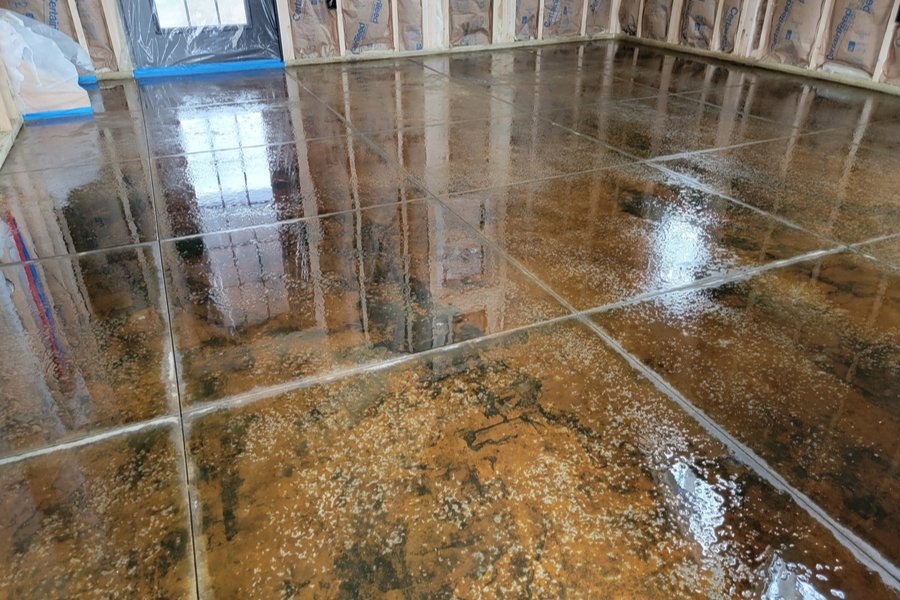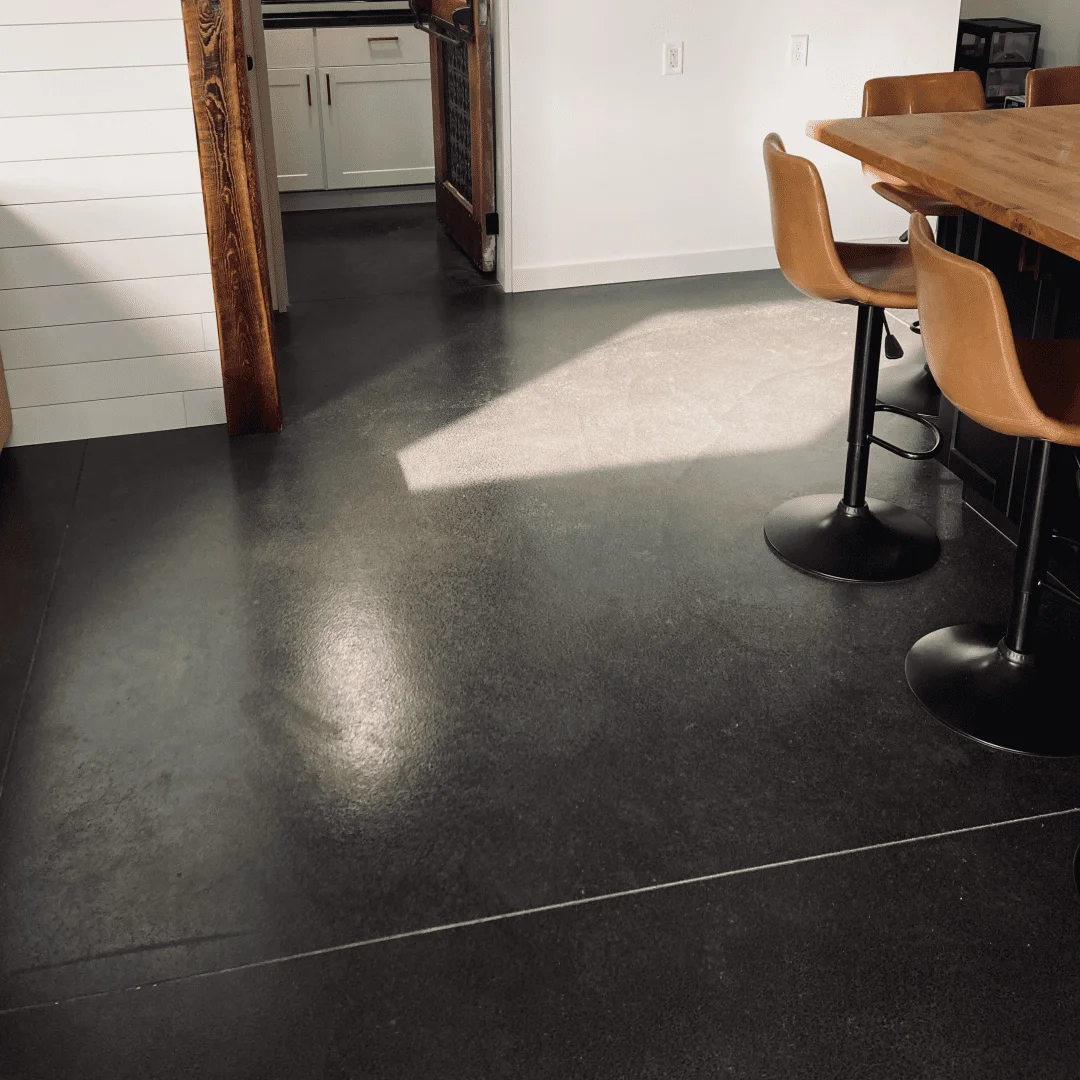Why Commercial Stained Concrete Floors Are a Strategic Upgrade for Your Business
Why Local Discolored Floor Covering Is the Perfect Selection for Sustainable Home Improvement
In the realm of sustainable home improvement, local tarnished flooring has actually arised as a preferred option among environmentally mindful property owners. As a cost-effective financial investment with minimized maintenance demands, it raises a provocative question: could this be the suitable solution for sustainable housing?
Understanding the Principle of Local Discolored Floor Covering
While the idea might appear unique to some, regional stained floor covering is a cutting-edge approach to home improvement that combines appearances, toughness, and sustainability. The discoloration procedure not just enhances the all-natural charm of the wood grain however additionally adds a layer of security, boosting the durability of the floor covering. Making use of local timber types frequently sustains local economies and promotes responsible woodland monitoring methods.
The Aesthetics of Local Tarnished Flooring
Why is regional stained floor covering getting appeal for its aesthetics? The answer hinges on the distinct charm and personality it brings to any kind of room. Neighborhood tarnished floor covering offers a diverse variety of colors and patterns, mirroring the natural charm and variants of the neighborhood timber species utilized. This creates an unique, tailored visual that can not be replicated by mass-produced options. Furthermore, the discoloration process boosts the wood's natural grain and texture, adding depth and richness to the flooring's look. This rustic sophistication perfectly blends with various interior style styles, from typical to modern, making it a flexible selection for house owners. Eventually, the attraction of local tarnished flooring depends on its ability to transform homes into unique, aesthetically appealing rooms while advertising sustainability.
Environmental Influences of Regional Stained Flooring
The ecological ramifications of local discolored flooring encompass 2 considerable factors: lowering carbon footprint and waste reduction benefits. Utilizing in your area sourced materials for tarnishing not only reduces transportation exhausts, but additionally promotes lasting forestry methods. The waste minimization aspect comes right into play as these floor covering types frequently have a longer life-span, minimizing the constant need for substitutes and the waste associated with it.
Minimizing Carbon Impact
As property owners turn to more sustainable choices, regional discolored floor covering arises as a viable service to decrease carbon footprint. This kind of floor covering greatly makes use of locally sourced products, which dramatically decreases the requirement for transport. This minimizes emissions associated with freight transportation, adding to lower levels of greenhouse gases in the ambience. Moreover, the procedure of discoloring the flooring, instead than utilizing synthetic layers, entails fewer chemicals and much less energy-intensive treatments. This results in a decline in carbon emissions throughout the manufacturing process. Going with neighborhood discolored floor covering demonstrates an efficient measure in advertising ecological sustainability, highlighting a tangible method home owners can contribute to combating environment adjustment from the comfort of their very own homes.
Waste Reduction Benefits
Although often overlooked, waste reduction is another substantial advantage of neighborhood discolored flooring. In addition, the staining procedure utilizes less resources and generates less waste contrasted to producing new flooring products. The choice of regional stained flooring not only enhances homes yet likewise underpins a dedication to sustainable living and waste decrease.
The Resilience and Upkeep of Neighborhood Tainted Flooring

The Cost-Effectiveness of Neighborhood Discolored Flooring
While neighborhood discolored flooring could at first appear a lot more expensive than various other options such as carpeting or laminate, its durability and resilience quickly transform it into a cost-efficient choice. For homeowners seeking a lasting, economical service for their floor covering needs, local stained floor covering emerges as a premium, long-term financial investment that pays off over time.

The Real World Examples of Lasting Residences With Neighborhood Discolored Flooring
In the realm of lasting home improvement, regional tarnished flooring has become a popular option. To further show its advantages, a number of actual life instances of eco-friendly homes that have actually efficiently included this floor covering strategy will certainly be highlighted. These case research studies offer concrete evidence of the advantages and effect of making use of neighborhood tarnished floor covering in lasting homes.

Showcase: Eco-Friendly Flooring Residences
Scanning the globe, one can discover many homes that personify the concept of site environment-friendly living via using regional discolored flooring. In the heart of Denmark, a minimalist home prides itself on its oak-stained floors, sourced and treated within the see regional region. Across oceans in copyright, a contemporary home showcases its rich, maple-stained flooring, a testament to the plentiful regional wood supply. Down under in Australia, a beach house beams with its eucalyptus-stained floorings, showing the country's indigenous plants. These homes not only showcase the visual convenience of neighborhood discolored flooring but additionally its payment to a much more sustainable way of living. Each flooring narrates of regard for the atmosphere, proving that style and sustainability can indeed exist side-by-side.
Regional Tainted Flooring Benefits
The indisputable allure of local tarnished flooring extends beyond its visual appeal, as it likewise supplies substantial advantages to both house owners and the setting. This sort of flooring is sourced and produced locally, reducing transport exhausts and reinforcing the regional economic climate. The staining process uses natural, non-toxic products, advertising indoor air high quality and decreasing the home's environmental footprint. In a sustainable home in Rose city, Oregon, for circumstances, neighborhood discolored concrete floors not only boost the aesthetics yet additionally function as thermal mass, taking in warmth throughout the day and releasing it during the night, reducing energy usage. Another instance is a green-certified home in Austin, Texas, where locally sourced walnut was stained and made use of for additional info flooring, adding to the home's LEED qualification.
Verdict
In conclusion, local tarnished flooring is a sensible and sustainable choice for home renovation. With its one-of-a-kind mix of environmental, cost-effective and visual advantages, local discolored flooring is a clear selection for house owners seeking a lasting, cost-effective and aesthetically appealing home renovation service.
In the world of sustainable home improvement, neighborhood tarnished flooring has actually arised as a preferred choice among eco aware homeowners. Local stained flooring supplies a varied array of colors and patterns, showing the all-natural appeal and variants of the local wood species utilized. The option of neighborhood tarnished flooring not just beautifies homes however likewise underpins a dedication to lasting living and waste reduction.
For property owners seeking a sustainable, economical solution for their floor covering requires, regional discolored flooring arises as a premium, lasting financial investment that pays off over time. Stained Concrete.
With its distinct blend of ecological, cost-effective and aesthetic benefits, local tarnished flooring is a clear choice for home owners looking for a sustainable, aesthetically attractive and affordable home improvement option.